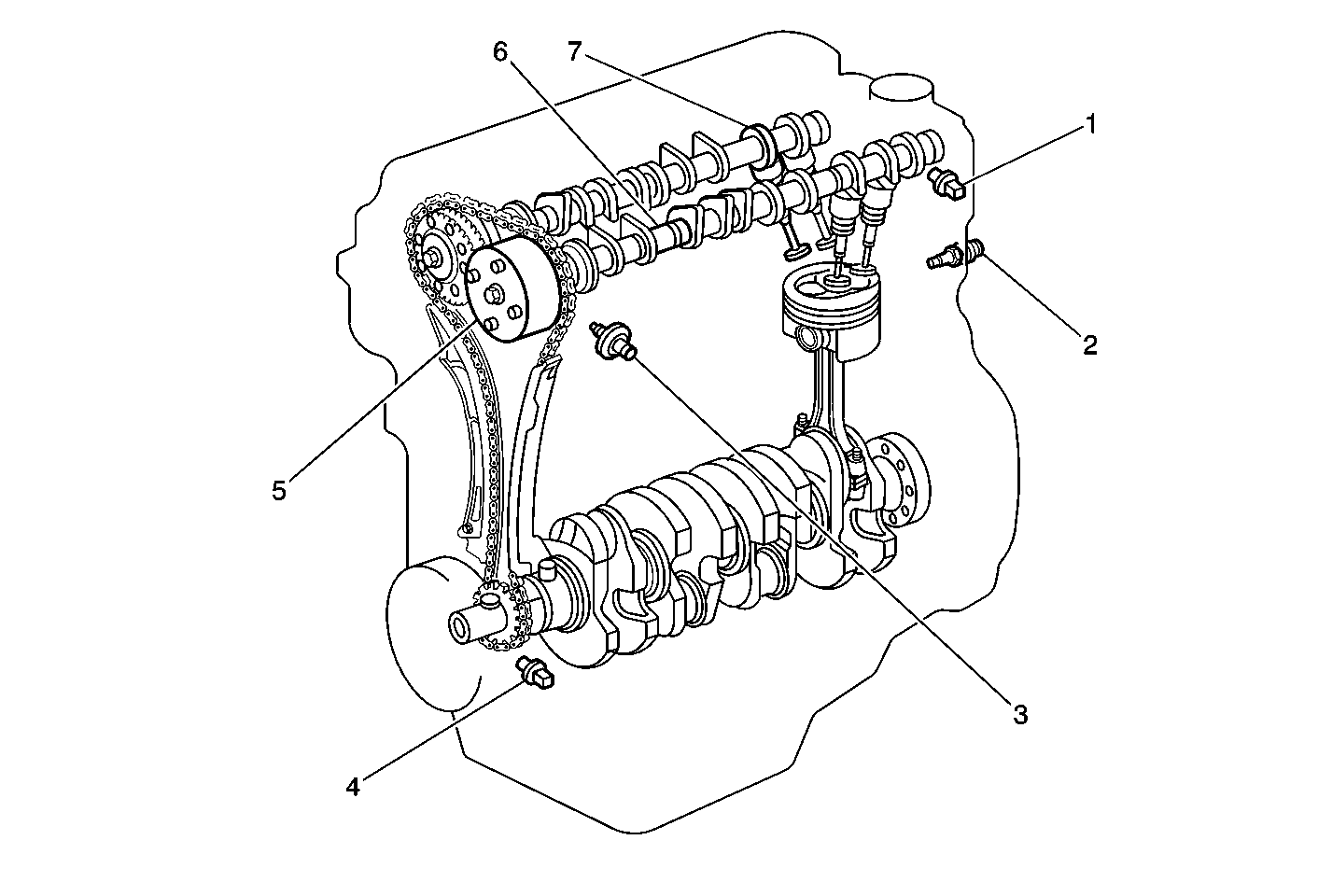The CMP actuator assembly has an outer housing (4) that is driven by the engine timing chain. Inside the assembly is a wheel (2) with fixed vanes that is attached to the intake camshaft (3). The CMP actuator assembly also contains a lock pin (1) that prevents movement between the outer housing and the wheel vane assembly. The lock pin is released by oil pressure before any movement in the CMP actuator assembly takes place.
